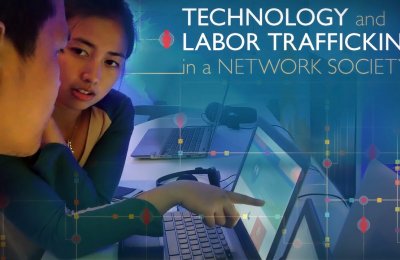By Krista Daly
Student Writer
A new collaborative, multimedia storytelling project from USC Annenberg attempts to change the stereotype of violence in South Los Angeles by revealing unique public spaces that embody the community’s push for social change.
Organizers of “South LA Democratic Spaces” aim to show South LA in a new light, through portrait photography and videos that reveal untold stories of 15 community organizers and their favorite physical spaces for encouraging social change.
Besides encouraging positive social change, the sites promote advocacy efforts and serve as building blocks for community-based social movements.
“We're trying to get people to see South LA through different eyes,” said communication professor Sandra Ball-Rokeach, who is the humanities project advisor for Democratic Spaces. “There are a lot of spaces in South LA that are wonderful spaces for democracy.”
The exhibit is funded by a Cal Humanities Community Stories grant and is a collaboration between USC Annenberg’s Intersections South LA and Metamorphosis Project Photos and stories are available online here and will be on display at USC Annenberg through Dec. 15.
The democratic spaces (mapped here) featured include the unexpected safety of a food truck, a vibrant community marketplace, historic public art, a small aquarium for children and much more. The goal of the exhibit is to draw a new portrait of democracy in South LA that powerfully counters mainstream narratives that long have stigmatized the area.
The opening of the exhibit on Sept. 27 hosted an interactive panel, in which small group discussions were held with one representative from each of the organizations.
“We should be featuring these community organizers doing great work, and it's nice to actually know there are other allies doing social change and democracy building in spaces and places in South LA,” said George Villanueva, project director for South LA Democratic Spaces.
Audiences seem eager to interact with the exhibit, he said.
“What I kept hearing a lot was that people were really excited by the multimedia aspect of it,” he said. “I overheard a lot of people say they were happy this wasn't only a one-time event, but they were ways to actually engage with the project online or offline, and also with the different organizations.”
Rebecca Batchelder, who came to view the exhibit, said she enjoyed it because people from different organizations came to see each other’s work, transforming the USC Annenberg wing into a place where people come together and share ideas of the work they are doing.
Villanueva said the exhibit helps the normally static space of USC Annenberg come alive.
“This space in Annenberg is normally full of chairs and without people. We actually activated it,” he said. “The place is now a space that's more democratic to me, where people could actually exchange ideas and exchange numbers. A lot of people are talking about future projects to do not only in South LA, but LA in general around these issues.”
The reactions from those attending were a testament to the exhibit’s success, he said.
“I think people really enjoyed being able to talk to some of the organizers and also not just hear from them in front of the panel, but engage in them and learn more about their organizations,” he said.
The one organization that stuck out in Batchelder’s mind was TRUST South LA, she said.
“I saw their little pamphlet on biking in South LA that highlighted some of the great things that South LA has to offer while highlighting some of the issues that South LA residents are working on,” Batchelder said.
Jay McAdams, executive director of the 24th Street Theatre, explained how the theater is a democratic space because of its ability to tell stories.
“Every time you do a play that's a democratic space,” McAdams said. “It doesn't matter what the play is about, no matter what the point of view. Even if you're doing a play from the point of view of Hitler, it's still about thoughts and point of view and sides of issues, so by the very nature of telling stories, you're opening up conversation and ideas and thought.”
He added that the theater is also a democratic space because it is a safe-haven for kids in the neighborhood.
Community Coalition (CoCo), another organization featured in the exhibit, is a place where everyday people take on pressing issues, said Aurea Montes-Rodriquez, the vice president for organizational growth at CoCo.
“All of the organization's history has really revolved around bringing together African-Americans and Latinos to improve the quality of education, to improve public safety without criminalizing the community, to build a strong social safety net and to build strong families,” Montes-Rodriguez said.
The best way to bring about this social change, Montes-Rodriguez said, is for the residents to get involved.
“(Residents) are the best agents to create social change and in our 22-year history residents have waged on some of the toughest action campaigns that have resulted in landmark victories,” she said, citing one of those as upping the requirement of Los Angeles Unified School District students to take college prep courses.
Other organizations included in the exhibit are:
- Peace Over Violence
- Strategic Actions for a Just Economy (SAJE)
- Strategic Concepts in Organizing and Policy Education (SCOPE)
- Los Angeles Community Action Network (LACAN)
- CD Tech
- Esperanza Community Housing Corporation
- Community Financial Resource Center
- Advancement Project
- Children’s Nature Institute
- Community Services Unlimited
- LA Black Worker Center
- The Trust for Public Land







